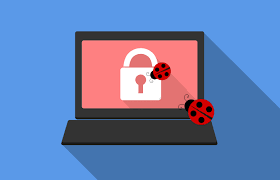
Understanding Malware: The Stealthy Threat Lurking in the Digital Shadows
Malware, a portmanteau of "malicious software," represents a pervasive and ever-evolving threat in the digital age. These insidious programs are designed with harmful intent, targeting computers, networks, and devices to steal data, compromise security, and wreak havoc. In this comprehensive exploration, we delve into the multifaceted world of malware, uncovering its origins, classifications, mechanisms, and strategies for detection and prevention.
Origins of Malware:
Malware has a rich history dating back to the early days of computing. While its early incarnations were relatively simple, today's malware is highly sophisticated. It has evolved in tandem with advancements in technology, becoming a formidable adversary in the digital realm. Malware can be created by various actors, including cybercriminals, hacktivists, and state-sponsored entities, each with distinct motives.
Malware Classifications:
Malware encompasses a diverse array of malicious software types. Here are some which we will be covering in this section, each with its own characteristics and objectives:
- Viruses: These programs infect host files or programs, replicating themselves when executed. They often require user interaction to propagate.
- Worms: Worms are self-replicating and self-propagating, capable of spreading across networks without user interaction. They exploit vulnerabilities to infect other systems.
- Trojans: Trojans disguise themselves as legitimate software, luring users into downloading and executing them. They often grant attackers unauthorized access or steal sensitive data.
- Ransomware: Ransomware encrypts a victim's data, demanding a ransom for its release. Paying the ransom is risky and not guaranteed to recover the data.
- Spyware: Spyware silently monitors a user's activities, collecting sensitive information such as keystrokes, passwords, and browsing habits.
- Adware: Adware bombards users with unwanted advertisements, often resulting in sluggish system performance and user frustration.
- Rootkits: Rootkits provide attackers with elevated privileges, enabling them to conceal malware and maintain long-term access to infected systems.
Mechanisms of Malware:
Malware employs a variety of mechanisms to infiltrate and compromise systems:
- Social Engineering: Malware often spreads through deceptive tactics, such as phishing emails, fake software downloads, or misleading advertisements, tricking users into executing the malicious code.
- Exploiting Vulnerabilities: Malware exploits software vulnerabilities to gain unauthorized access to systems. Regularly updating software is essential to patch known vulnerabilities.
- Drive-By Downloads: Visiting compromised or malicious websites can lead to automatic malware downloads, even without user interaction.
Conclusion:Detection and Prevention Strategies
Protecting against malware requires a multi-pronged approach:
- Antivirus and Anti-Malware Software: Install reputable antivirus and anti-malware software to detect and remove malicious programs.
- Firewalls: Implement firewalls to monitor and control network traffic, blocking known malicious patterns.
- Patch Management: Keep operating systems and software up-to-date to patch known vulnerabilities that malware exploits.
- User Education: Educate users about the risks of downloading files from untrusted sources, clicking on suspicious links, and practicing safe online behavior.
- Behavioral Analysis: Employ tools that monitor system and network behavior to detect anomalies indicative of malware activity.
In conclusion, malware remains a persistent and evolving threat in the digital landscape. Understanding its origins, classifications, and mechanisms is essential for individuals and organizations to defend against these stealthy adversaries. By staying informed, practicing safe online habits, and adopting robust cybersecurity measures, we can collectively mitigate the risks posed by malware and safeguard our digital assets.